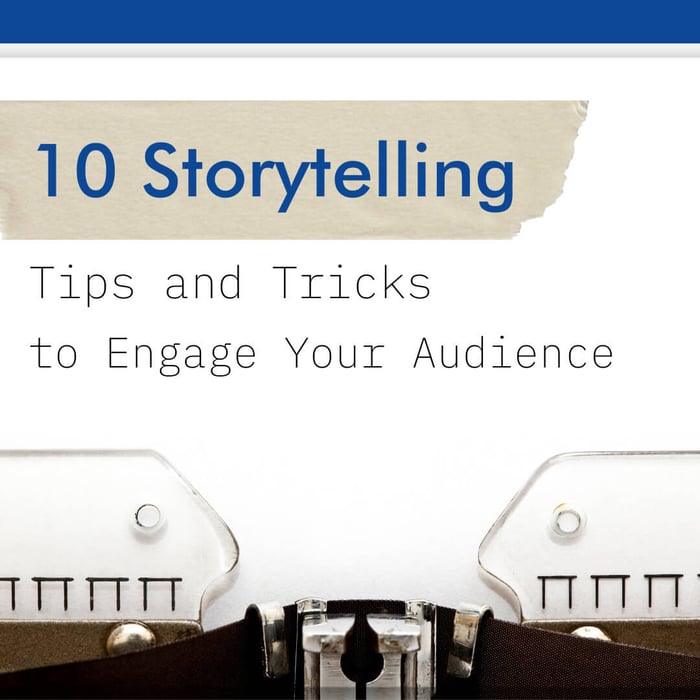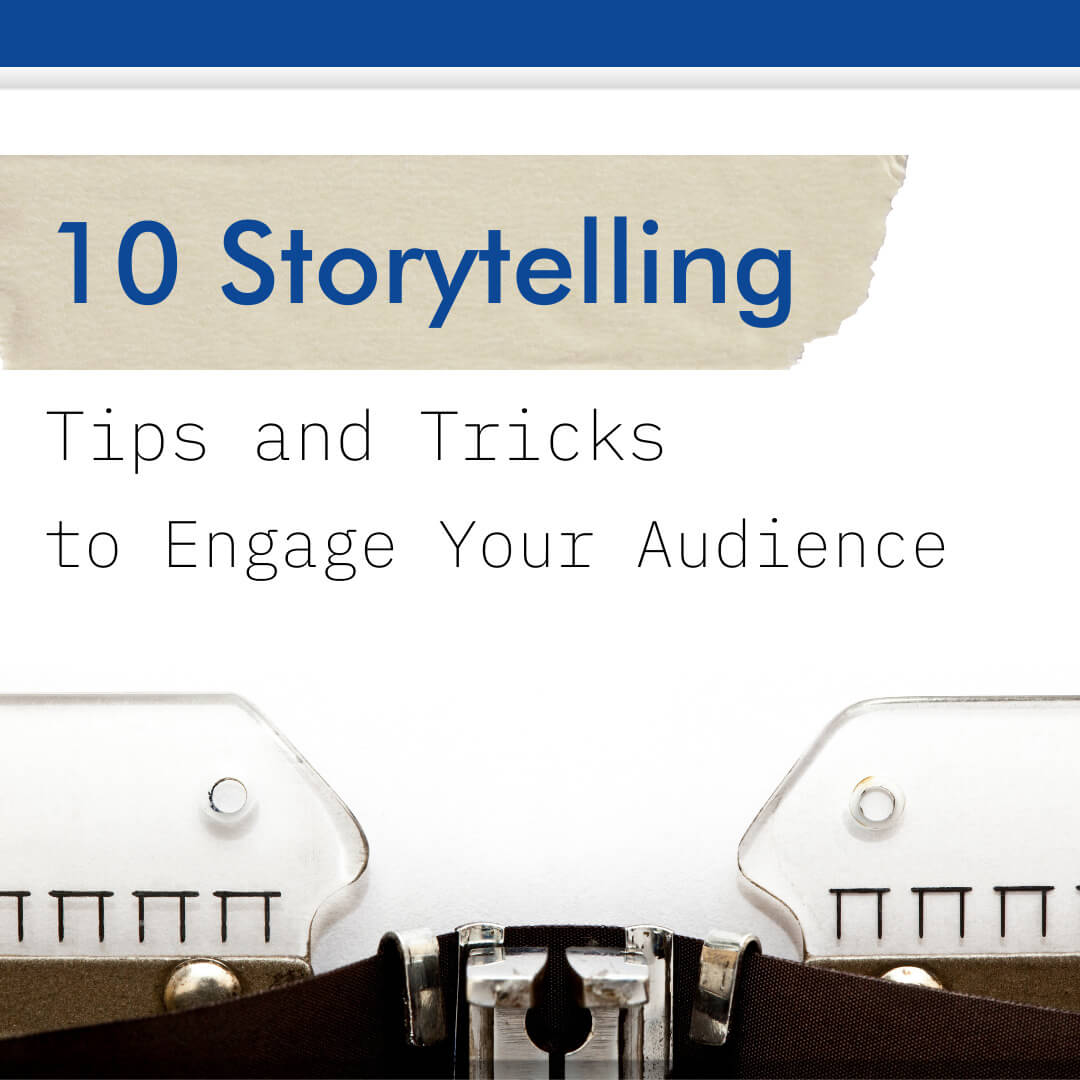Storytelling is one of the oldest and most powerful forms of communication. It engages our emotions and helps us to understand complex concepts. When it comes to marketing, storytelling is an incredibly effective way to engage with your audience and build a connection with them. In this blog post, we will discuss 10 storytelling tips and tricks that will help you engage with your audience and tell your story in a more effective way!
What's storytelling?
Storytelling is the act of sharing a story. It can be done verbally, through written words, or even through body language and gestures. A story can be anything from a personal anecdote to a mythological tale. When it comes to marketing, storytelling is used as a way to engage with an audience and build a connection with them.
Why is storytelling important?
Storytelling is important because it helps us connect with our audience on an emotional level. When we hear a story that resonates with us, we are more likely to remember it and feel connected to the person who told it. Storytelling also allows us to share complex concepts in a way that is easy for people to understand.
How can I use storytelling in my marketing?
As a marketer, you are in the business of persuasion. You need to convince your prospects that they need your product or service, and that your company is the best supplier. In order to do this effectively, you need to tell a story that resonates with your audience.
A good story will help your prospects to see the value of what you're offering, and it will also create an emotional connection that will encourage them to take action. In short, storytelling is essential for effective marketing. So next time you're crafting a marketing campaign, make sure to include a good story!
There are many ways that you can use storytelling in your marketing. You can use it to create brand awareness, build customer loyalty, and even increase sales. Here are a few tips and tricks to help you get started:
Don't you have a Marketing Strategy? learn how to create your own Marketing strategy here
Start with a strong hook
A good hook immediately draws the reader in and entices them to keep reading. After all, who wants to read a boring paper? The best hooks are those that are unexpected or unique, but still relevant to the topic at hand.
For example, starting a paper with a quote from a famous person or an interesting statistic can be an effective way to pique the reader's interest.
Another option is, to begin with a brief description of a scene or event that is relevant to your topic. No matter which approach you choose, make sure that your hook is attention-grabbing and enjoyable to read. Otherwise, you run the risk of losing your audience before you even get started.
Make it personal
As any good marketer knows, personalization is key. After all, you wouldn't want to send a generic message to your target audience - that would be a surefire way to get them to tune out. So how do you make sure your marketing texts are personal?
First, think about who your target audience is and what they're interested in. Then, craft a message that speaks to those interests. Make it sound like you're talking to them as an individual, rather than just another member of a faceless mass. Finally, don't forget to use their name! A little bit of personalization can go a long way towards building a relationship with your customers.
Use descriptive language
In order to engage potential customers, businesses must use language that is both interesting and informative. However, many companies make the mistake of using generic or technical language in their marketing materials. This can alienate potential customers, as they may feel that the company is not speaking to them directly. Therefore, it is essential to use descriptive language in marketing texts.
By using words that evoke images and emotions, businesses can create a strong connection with potential customers. Furthermore, descriptive language helps to set a company's products or services apart from the competition. By using language that is both unique and engaging, businesses can ensure that their marketing materials make a lasting impression.
Talk to your target audience
In order to talk to your target audience in your marketing texts, you need to understand who they are and what they want. Take some time to research your target market and figure out what makes them tick. What are their pain points? What motivates them? Once you have a good understanding of your target audience, you can start crafting messages that speak to them directly.
Use language that they will understand and be sure to address their specific needs and concerns. If you can connect with your target audience on a personal level, you'll be more likely to get their attention and win their business.
Use your brand story
Brand stories are a great way to build loyalty and trust with your audience. Share the story of how your brand came to be, what it stands for, and why people should care about it.
Share a good story

There's no doubt about it: good stories are engaging. They can draw readers in and persuade them to keep reading, even if they're not particularly interested in the subject matter. And that's why good stories are such an important tool for marketing professionals. Whether you're trying to sell a product, promote a service, or raise awareness for a cause, a well-told story can make all the difference.
Stories can humanize your brand, build trust with your audience, and create an emotional connection that is essential for converting prospects into customers. So if you're looking for a way to take your marketing texts to the next level, consider using good stories to capture your readers' attention and keep them coming back for more.
Keep it concise
Your story should be long enough to capture your audience's attention, but short enough to hold their interest. If you start to lose your listeners, wrap up your story quickly.
Evoke emotion
As any marketer worth their salt knows, evoking emotions in your marketing texts is essential if you want to convert readers into customers. After all, people buy based on how they feel, not on logic. So if you can make your target audience feel something positive when they read your marketing materials, you're more likely to get them to take the desired action.
There are a few different ways to evoke emotions in your marketing texts. One is to tell a story that resonates with your audience on an emotional level. Another is to use persuasive language that taps into their desires and fears. You can also use images and other visuals to create an emotional response.
Whatever approach you take, just make sure that you're evoking positive emotions like happiness, excitement, or love. Negative emotions like anger, sadness, or fear may prompt people to take action, but they're not likely to lead to long-term customer loyalty.
Make it visual
People are more likely to remember a story if it is accompanied by visuals. Use images, infographics, or even videos to help bring your story to life.
End with a call to action
After you have engaged your audience and told them your story, it's important to include a call to action. This could be anything from signing up for your newsletter to visiting your website.
Are you looking for ways to increase your engagement?
We hope that you’ve found these storytelling tips and tricks helpful in engaging your audience. At Social Growth Engine, we are passionate about helping businesses grow through digital marketing. Our team of experts can help you create a content strategy that tells your brand story in a way that engages and converts your audience. If you’re ready to take your business to the next level, head over to our website and contact us today!

